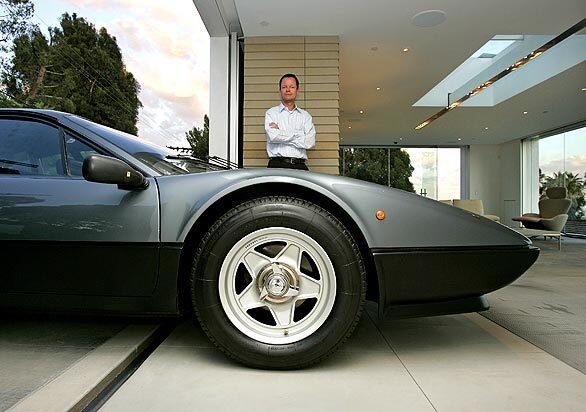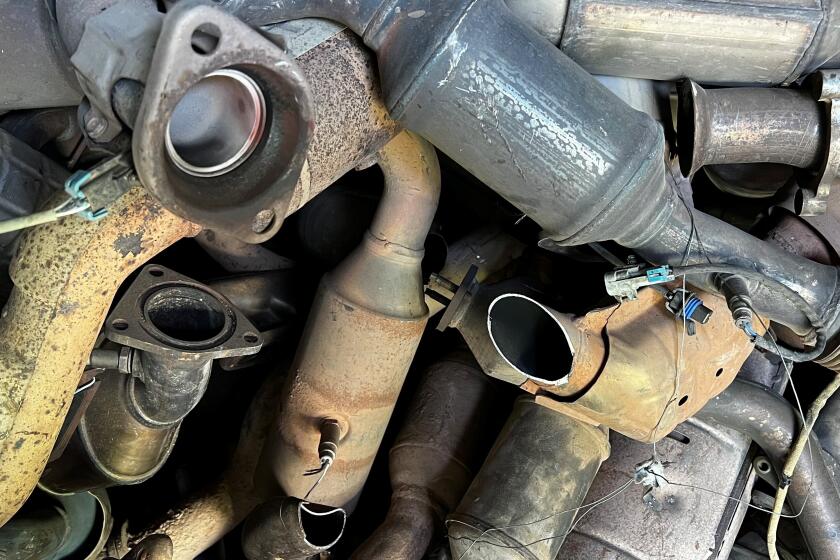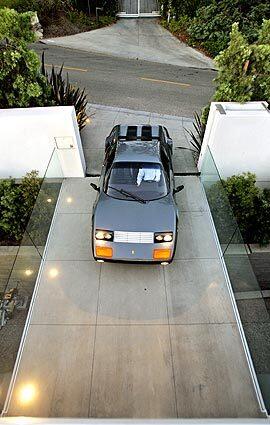
“I like very pure, minimalistic, empty space,” the German-born Schubert says. Think polished concrete, lots of glass and halogen lighting. “I like to be in a space where things line up and nothing stands out.”
Back to L.A. at Home design blog (Ricardo DeAratanha / Los Angeles Times)
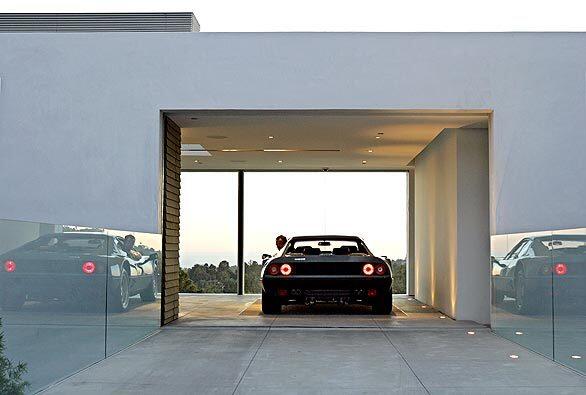
Because a Ferrari needs a view.
Back to L.A. at Home design blog (Ricardo DeAratanha / Los Angeles Times)
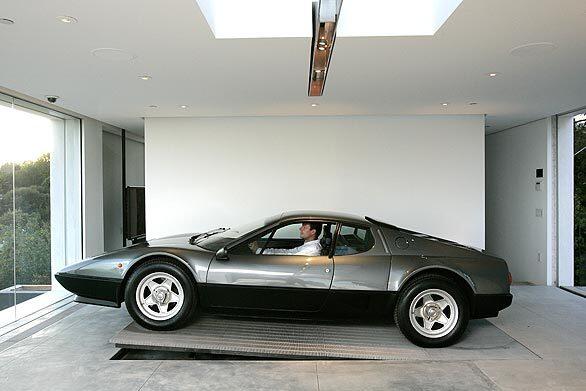
One wall is covered in Homasote, a kind of recycled paper-fiber lapboard, with a single-tier bookshelf built in. Two walls are floor-to-ceiling glass with retractable exterior shades to cut down on the afternoon sunlight. Overhead, the central skylight is artfully bisected with an aluminum enclosure for halogen lights.
To avoid exhaust fumes when the car is started, Schubert built a hydraulic ramp into the floor. The ramp tilts up about six inches at the front, enabling the car to roll back across the bridge and into the street before it’s started.
Back to L.A. at Home design blog (Ricardo DeAratanha / Los Angeles Times)
Advertisement
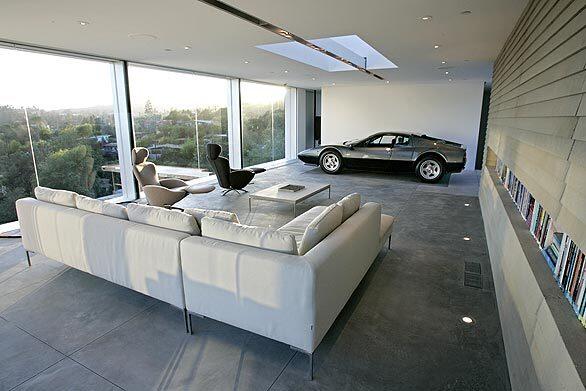
Further proof that the automobile role as machine has been abandoned in favor of its status as objet d’art: There are no wrenches, screwdrivers or battery boosters lying around ? and Schubert will need them if the Ferrari remains true to form. Such a garage is consistent with the fact that modern cars are largely inaccessible to the tinkering, shade-tree mechanic. Most people never open the hoods of their cars. Instead, this garage has a lovely modular couch, two Dodo recliners by Toshiyuki Kita, a metal and stone coffee table and ...
Back to L.A. at Home design blog (Ricardo DeAratanha / Los Angeles Times)
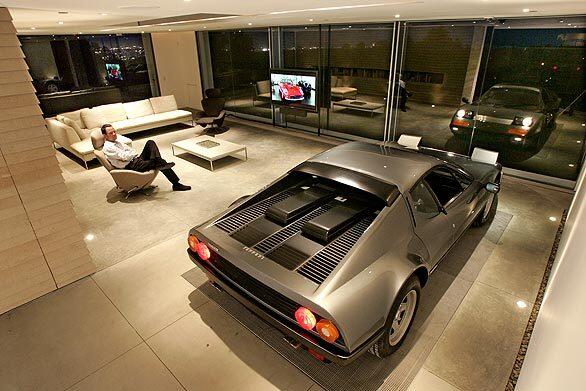
... a flat-screen TV on tracks that can traverse the length of the room. “People in L.A. care so much about their cars and then the cars wind up stuck out in garages,” says Schubert, whose garage truly brings the car into the living space.
Back to L.A. at Home design blog (Ricardo DeAratanha / Los Angeles Times)
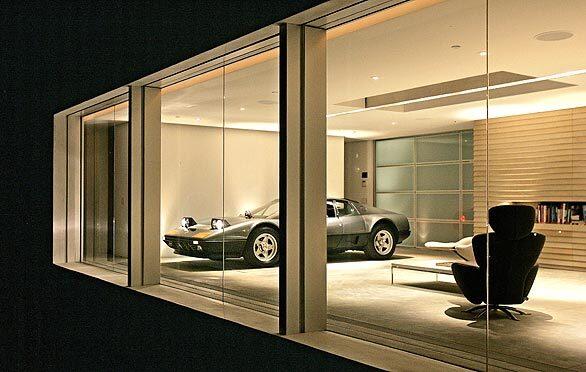
There has always been good reason to separate cars from living space. Cars are kind of stinky and oily. In modern cars, the passive reeking of gas and oil has largely been overcome by strict clean-air requirements that limit out-gassing. Soon, emission-free electric cars will “really open up the design of houses,” says Schubert, so that people will be able to drive directly into the home. It would make unloading groceries easier. Schubert looks forward owning an electric car, and his garage is pre-wired for a high-capacity charger and has 49 solar panels on the roof. But the electric car will have to sleep elsewhere. The Ferrari, he says, “has found its permanent home.”
For more on the contest and a peek at other entries, look for the post on our L.A. at Home blog. (Ricardo DeAratanha / Los Angeles Times)
